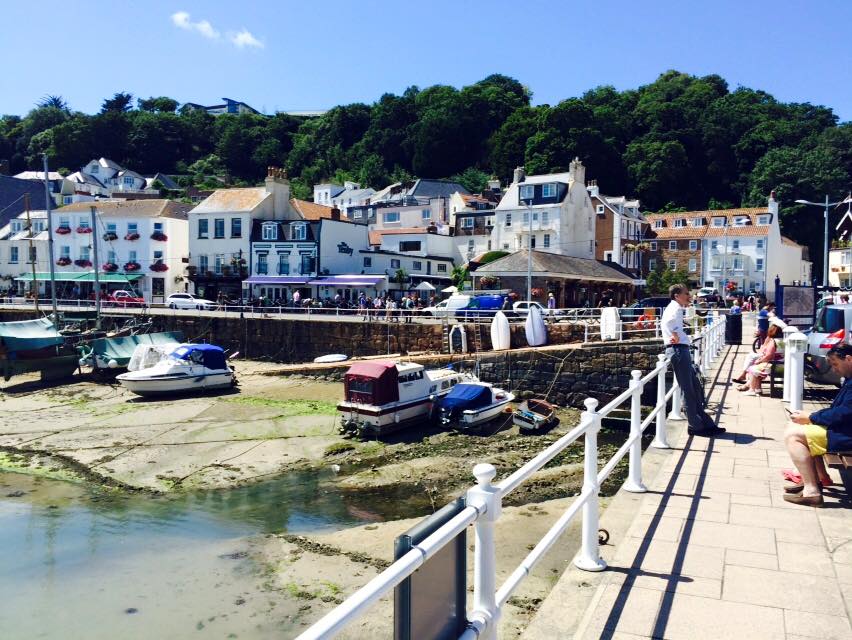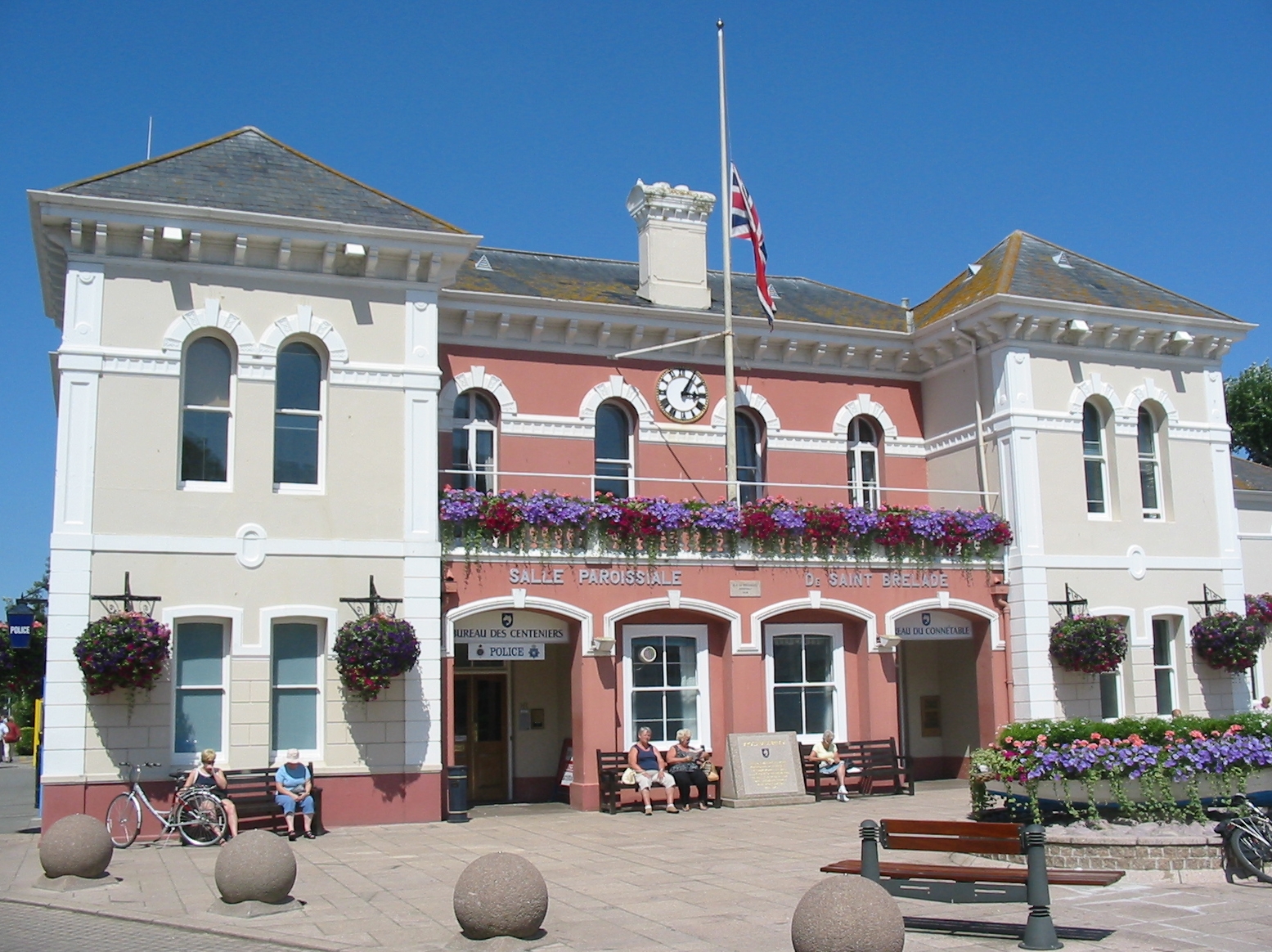Saint Aubin, Jersey on:
[Wikipedia]
[Google]
[Amazon]

 St. Aubin (
St. Aubin (
 St. Aubin's Fort () lies in the bay on a
St. Aubin's Fort () lies in the bay on a

 St. Aubin (
St. Aubin (Jèrriais
(french: Jersiais, also known as the Jersey Language, Jersey French and Jersey Norman French in English) is a Romance language and the traditional language of the Jersey people. It is a form of the Norman language spoken in Jersey, an island i ...
: ''Saint Aubîn'') is a town and port in St. Brelade in Jersey
Jersey ( , ; nrf, Jèrri, label=Jèrriais ), officially the Bailiwick of Jersey (french: Bailliage de Jersey, links=no; Jèrriais: ), is an island country and self-governing Crown Dependencies, Crown Dependency near the coast of north-west F ...
, the largest of the Channel Islands. It is located on the western end of St. Aubin's Bay, on the south coast of the island, opening out into the Gulf of Saint-Malo.
St. Aubin was originally a fishing village and the historic economic centre of the island. The Jersey Railway
The Jersey Railway was opened in 1870 and was originally a standard gauge railway, long, in Jersey in the Channel Islands. Converted to narrow gauge in 1884 and extended giving a length of , the line closed in 1936. It is not to be confused ...
historically terminated in the town, at what is now the parish hall. The Railway Walk, a trail
A trail, also known as a path or track, is an unpaved lane or small road usually passing through a natural area. In the United Kingdom and the Republic of Ireland, a path or footpath is the preferred term for a pedestrian or hiking trail. Th ...
following the route of the former Jersey Railway
The Jersey Railway was opened in 1870 and was originally a standard gauge railway, long, in Jersey in the Channel Islands. Converted to narrow gauge in 1884 and extended giving a length of , the line closed in 1936. It is not to be confused ...
to La Corbière
La Corbière ( Jèrriais: ''La Corbiéthe'') is the extreme south-western point of Jersey in St. Brélade. The name means "a place where crows gather", deriving from the word ''corbîn'' meaning ''crow''. However, seagulls have long since dis ...
, starts from St Aubin.
The town is the civil administrative centre for the parish of St. Brelade, however ecclesiastically, the parish church is located in St. Brelade's Bay. It retains a much more historic character than St. Helier, whose architecture has changed as the centre of Jersey's finance industry
Financial services are the economic services provided by the finance industry, which encompasses a broad range of businesses that manage money, including credit unions, banks, credit-card companies, insurance companies, accountancy companies, ...
.
Toponymy
Its name refers to Saint Aubin, the 6th Century C.E. bishop ofAngers
Angers (, , ) is a city in western France, about southwest of Paris. It is the prefecture of the Maine-et-Loire department and was the capital of the province of Anjou until the French Revolution. The inhabitants of both the city and the prov ...
, and may reflect the name of a long-disappeared chapel.
The town has been referred to various as a town or a village. In Jersey, "town" is generally used as slang for the largest town on the island, St. Helier.
History
At the beginning of the 17th century, there was no quay in or road to St Aubin. At this time all the homes in the town were on the hillsides or up Mont les Vaux. In 1648, the States ordered the construction of a pier, however there was still no road to the island's capital. Although St. Helier seems to have always been the Bailiwick's administrative capital and held the island's major market, St. Aubin was historically the centre for international trade, particularly during theNewfoundland
Newfoundland and Labrador (; french: Terre-Neuve-et-Labrador; frequently abbreviated as NL) is the easternmost province of Canada, in the country's Atlantic region. The province comprises the island of Newfoundland and the continental region ...
cod-fishery. This is because it was the only large port on the island. St. Helier only had a small quay until 1840, however after the development of the St. Helier harbours, it displaced St. Aubin as the major trading post.
In 1844, the road between St. Helier and La Haule (St Aubin's Road) was finished. That same year, the road between La Haule and St. Aubin opened too, finally connecting St. Aubin to the island's larger town.
In the 19th century, the town of St. Helier experienced a large amount of growth due to the industrialisation
Industrialisation ( alternatively spelled industrialization) is the period of social and economic change that transforms a human group from an agrarian society into an industrial society. This involves an extensive re-organisation of an econo ...
of the island and immigration from France
France (), officially the French Republic ( ), is a country primarily located in Western Europe. It also comprises of Overseas France, overseas regions and territories in the Americas and the Atlantic Ocean, Atlantic, Pacific Ocean, Pac ...
and England
England is a country that is part of the United Kingdom. It shares land borders with Wales to its west and Scotland to its north. The Irish Sea lies northwest and the Celtic Sea to the southwest. It is separated from continental Europe b ...
. St. Aubin did not follow the same pattern of growth, being constrained by its hilly geography.
Climate
Saint Aubin enjoys a relatively warm version oftemperate
In geography, the temperate climates of Earth occur in the middle latitudes (23.5° to 66.5° N/S of Equator), which span between the tropics and the polar regions of Earth. These zones generally have wider temperature ranges throughout t ...
Oceanic climate
An oceanic climate, also known as a marine climate, is the humid temperate climate sub-type in Köppen classification ''Cfb'', typical of west coasts in higher middle latitudes of continents, generally featuring cool summers and mild winters ( ...
(Cfb) with mild temperatures year round and rare negative extremes. There are relatively low precipitations, nearly all in form of rain or mist (843 mm/annum). There are four seasons with wet and mild winter starting in early December and ending in the beginning of March, changing into much sunnier and warmer spring which ends during May. Local summer, sunny, warm and quite dry, then continues up to its end in the course of September. Autumn, rapidly cooling and wetter lasts into the end of November. Average round the clock temperatures in July stays on +18.8°C and February mean temperatures stays on +5.4°C. The whole year average is , the warmest place on the Jersey island.
Landmarks
 St. Aubin's Fort () lies in the bay on a
St. Aubin's Fort () lies in the bay on a tidal island
A tidal island is a piece of land that is connected to the mainland by a natural or man-made causeway that is exposed at low tide and submerged at high tide. Because of the mystique surrounding tidal islands, many of them have been sites of ...
, just outside the harbour. This fort is accessible on foot, at a low tide, via a causeway
A causeway is a track, road or railway on the upper point of an embankment across "a low, or wet place, or piece of water". It can be constructed of earth, masonry, wood, or concrete. One of the earliest known wooden causeways is the Sweet Tra ...
that runs from the road just in front of the Royal Channel Islands Yacht Club. The fort features a tower keep that is surrounded by granite
Granite () is a coarse-grained (phaneritic) intrusive igneous rock composed mostly of quartz, alkali feldspar, and plagioclase. It forms from magma with a high content of silica and alkali metal oxides that slowly cools and solidifies undergro ...
walls and ramparts. During the German occupation of the Channel Islands
The military occupation of the Channel Islands by Nazi Germany lasted for most of the Second World War, from 30 June 1940 until liberation on 9 May 1945. The Bailiwick of Jersey and Bailiwick of Guernsey are two island countries and British ...
, the German forces added bunkers and other features to the fort.
The Anglican church of St Aubin on the Hill is located uphill from the harbour. There is also a Catholic church, the Sacred Heart Church.References
External links
Ports and harbours of Jersey Saint Brélade {{Jersey topics